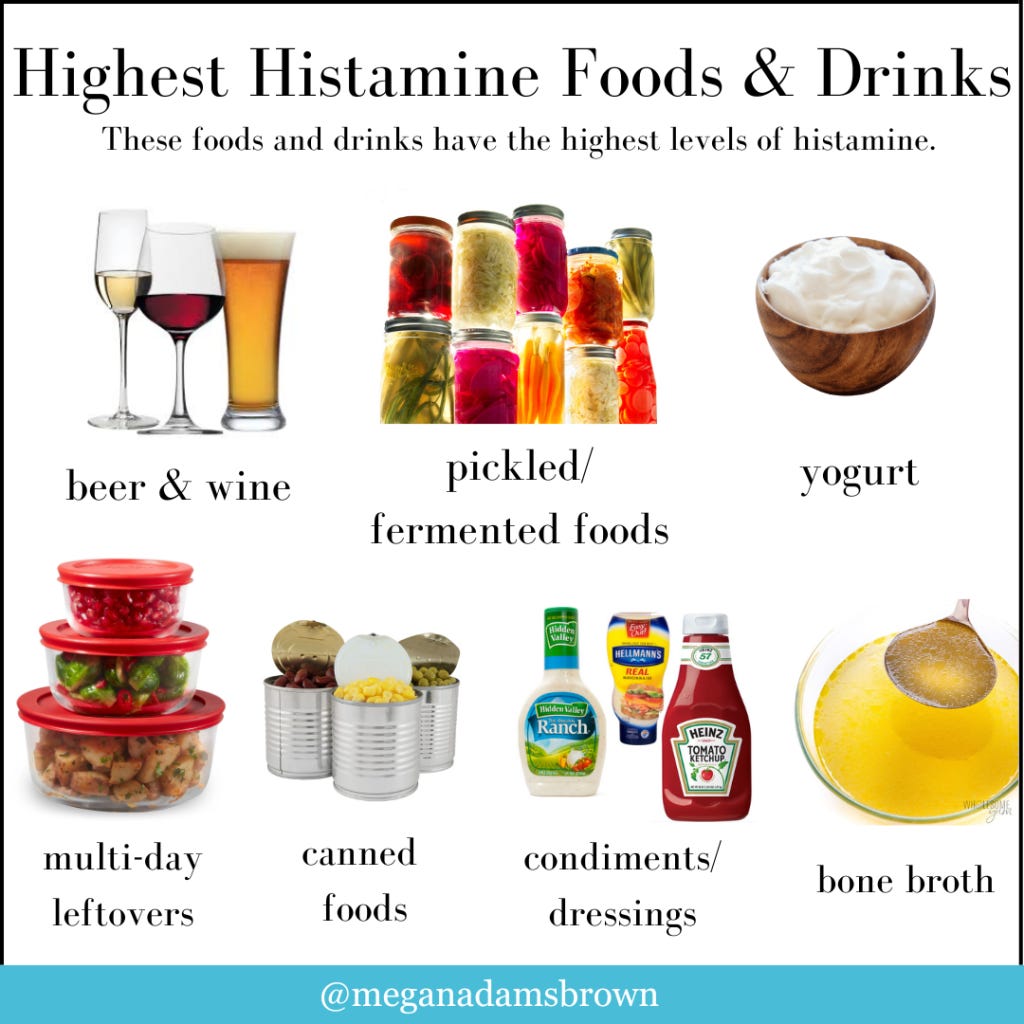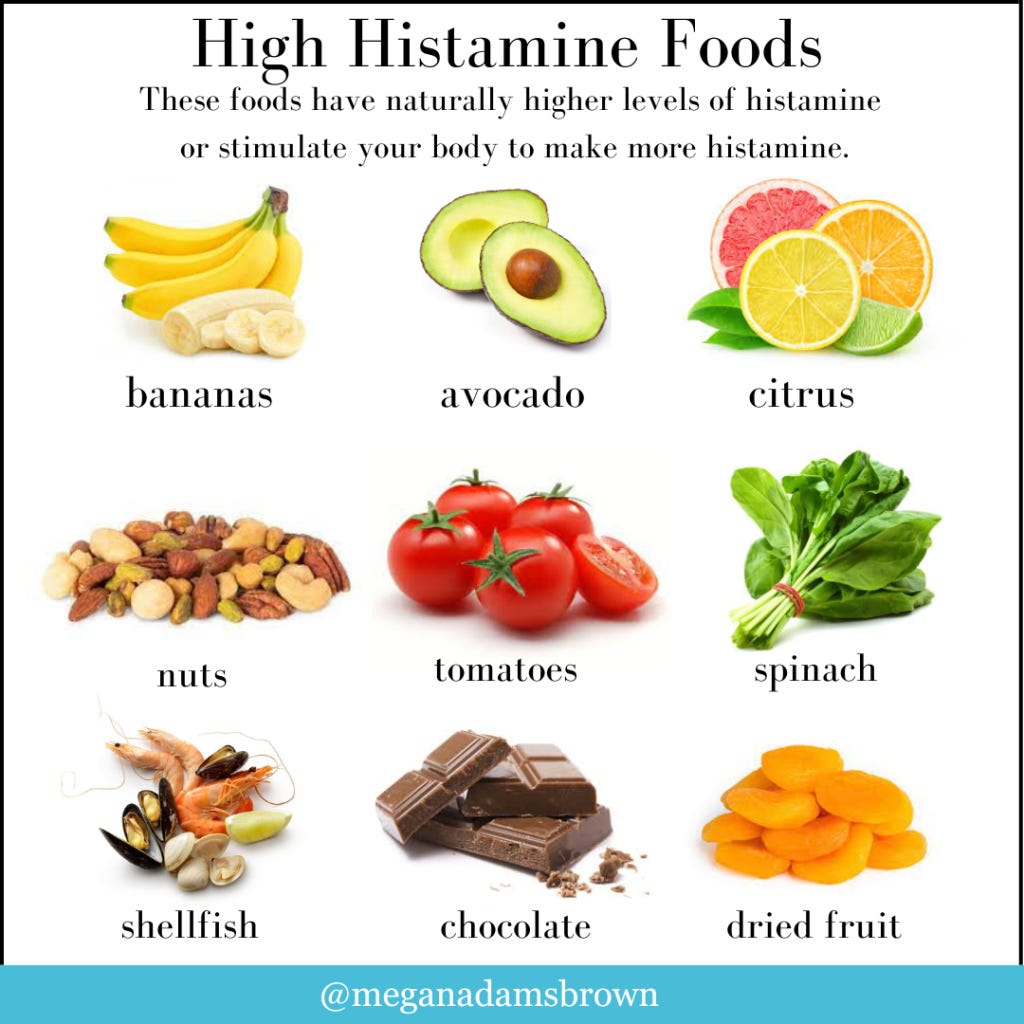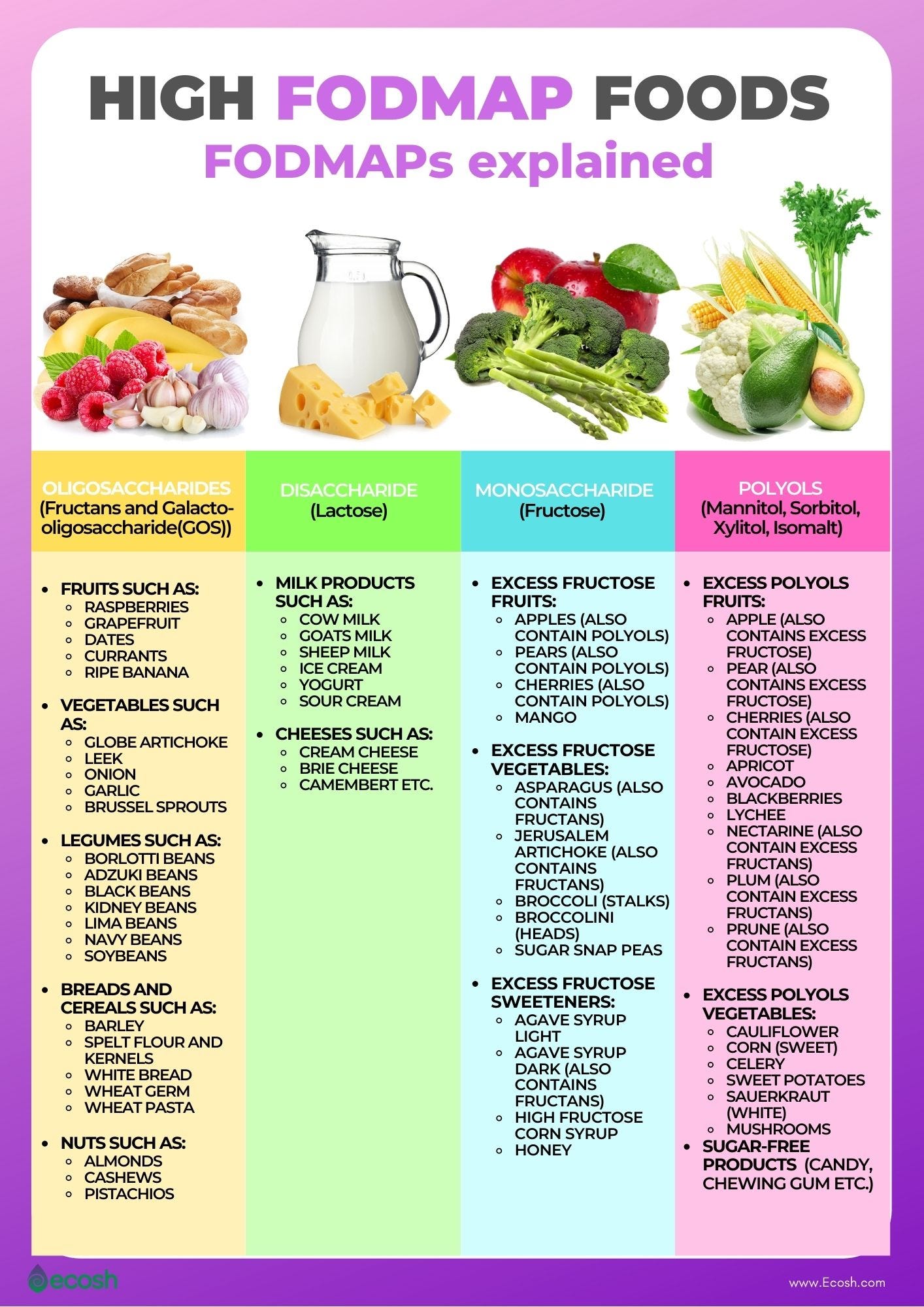Consider an elimination diet
Very low carb, high fat ketogenic diets have been used therapeutically in the treatment of epilepsy,1 various mental health disorders,2 and dementia.3 Ketogenic/carnivore diets have helped individuals with various autoimmune diseases.456 An oil-free whole food plant-based diet has been used as part of a program that resulted in the reversal of cardiovascular disease.7 Very low salt, starch-based diets have been successfully used to treat uncontrollable hypertension.8
Elimination diets have also been used for diseases that are less well-defined. For example, low histamine and low FODMAP diets have been used to treat patients with histamine intolerance, small intestinal bacterial overgrowth, and irritable bowel syndrome, disorders that are poorly understood.91011121314151617 Histamine intolerance in particular, seems to be a growing problem in our society, or at least there is growing recognition. Histamine intolerance can lead to allergic type symptoms like nasal congestion, runny nose, and itching, but also non-allergic symptoms like anxiety, agitation, heart palpitations, insomnia, and gastrointestinal disturbances.
As you can see from the figures below, elimination diets like the low histamine-low FODMAP diet, can be complicated and very restrictive:
Nevertheless, these diets can be very helpful in controlling symptoms until underlying root causes are addressed. What are the root causes? Likely some combination of nutrient deficiencies, nutrient excesses, antibiotic use/gut dysbiosis, oxalate overload, and dysregulated immunity.
Speaking of the immune system, another way to craft an elimination diet is to measure your IgG antibodies against a wide variety of foods. Typically a hundred or more different foods are tested. The idea is to eliminate those foods against which your body mounts the strongest immune reaction. Skeptics say that these antibodies merely reflect exposure to a certain food, rather than a reaction to that food, however this is contradicted by abundant anecdotal reports, and multiple scientific studies have shown benefit.181920
My thoughts in general on elimination diets are that they provide a good starting point. Choose a very limited number of nutrient dense foods that make you feel good or at least improve any symptoms you might have. Stick to the diet religiously for a couple months. Use vitamin and mineral supplements as necessary. Then add back one food at a time. Monitor your symptoms for at least a week before adding any other foods. Eventually broaden your diet as much as possible. Be careful to avoid orthorexia.21
When using diet as part of disease treatment, it is especially important to work with a health care provider educated in lifestyle medicine, and/or a dietitian.
https://pubmed.ncbi.nlm.nih.gov/31635247/
https://pubmed.ncbi.nlm.nih.gov/38792361/
https://pubmed.ncbi.nlm.nih.gov/31996078/
https://pubmed.ncbi.nlm.nih.gov/39296504/
https://pubmed.ncbi.nlm.nih.gov/37665667/
https://pubmed.ncbi.nlm.nih.gov/39188713/
https://pubmed.ncbi.nlm.nih.gov/9863851/
https://pmc.ncbi.nlm.nih.gov/articles/PMC11773661/
https://pubmed.ncbi.nlm.nih.gov/26976734/
https://pubmed.ncbi.nlm.nih.gov/34209583/
https://pubmed.ncbi.nlm.nih.gov/33919293/
https://pubmed.ncbi.nlm.nih.gov/36337620/
https://pubmed.ncbi.nlm.nih.gov/32824107/
https://pubmed.ncbi.nlm.nih.gov/38769188/
https://pmc.ncbi.nlm.nih.gov/articles/PMC5390324/
https://pmc.ncbi.nlm.nih.gov/articles/PMC8663790/
https://pmc.ncbi.nlm.nih.gov/articles/PMC10857121/
https://pubmed.ncbi.nlm.nih.gov/34640335/
https://pubmed.ncbi.nlm.nih.gov/22429360/
https://pubmed.ncbi.nlm.nih.gov/15361495/
https://pmc.ncbi.nlm.nih.gov/articles/PMC4340368/




